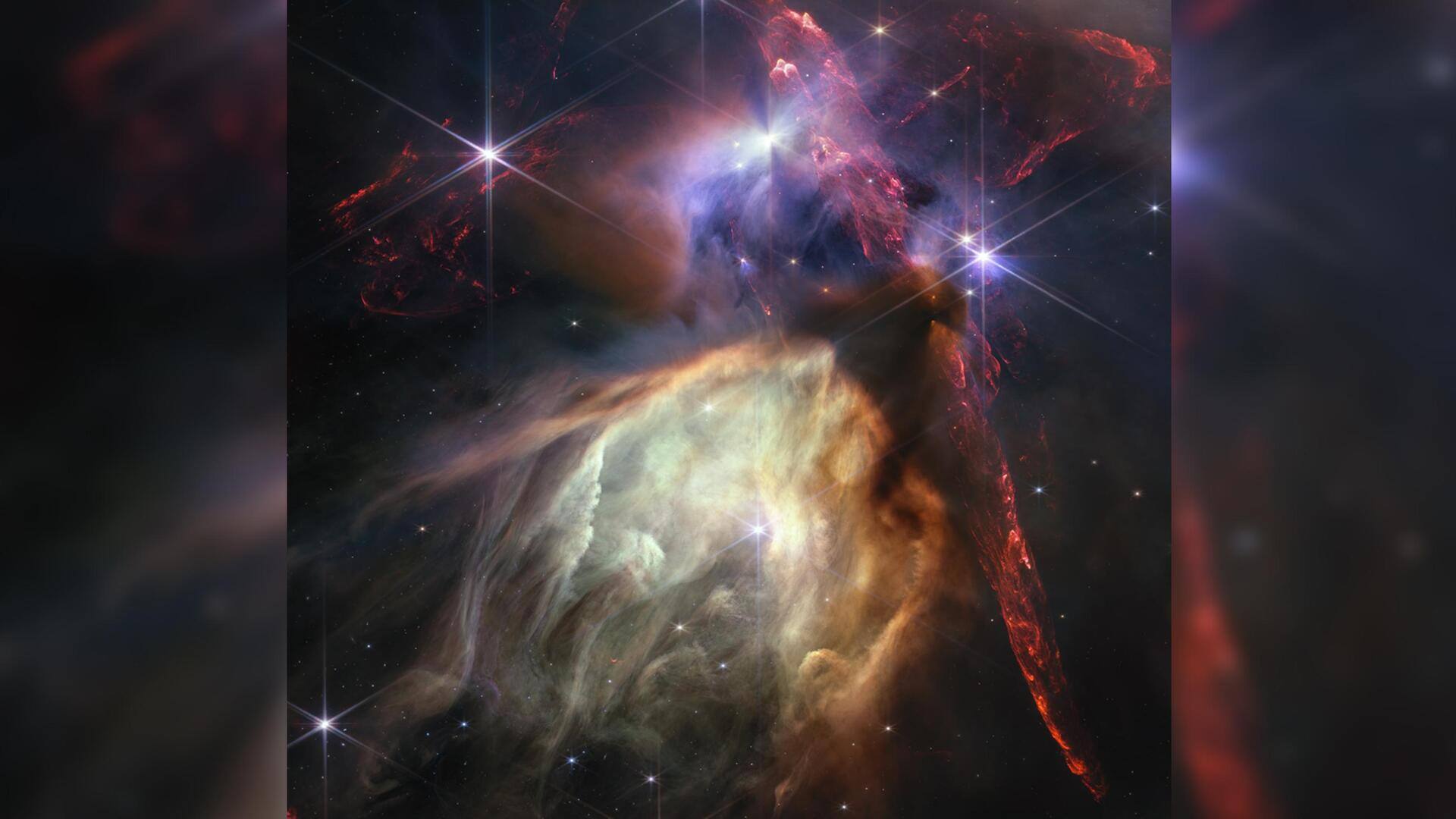
JWST's 1-year anniversary: NASA shares spectacular image of star-forming region
What's the story
NASA's James Webb Space Telescope (JWST) has reached a crucial milestone. The powerful observatory has successfully marked one year of conducting science investigations, broadening our understanding of the universe in ways like never before. In commemoration of this accomplishment, NASA has released a spectacular new image of the closest star-forming region to the Earth, called Rho Ophiuchi, located about 390 light years from us.
Image
The image sheds light on the birth of Sun-like stars
The latest Webb image provides a closer look at how stars are being birthed. About 50 young stars, all of which weigh similar to the Sun's mass, are enveloped in thick clouds of gas. What's interesting is that a few of the stars in the picture depict "tell-tale" signs of protoplanetary disks, which lead to the formation of new planetary systems.
Stars
The red trails are jets of molecular hydrogen
The trails of bright red are actually "jets of molecular hydrogen." Stars release these jets in opposing directions when they first break out of the dust clouds they were formed in. Another prominent feature is the "glowing cave of dust" housing a star, seen toward the bottom. This is the only star in the image that's "significantly more massive than the Sun," per NASA.
Significance
Webb provides insights into stellar lifecycle with new clarity
"Webb's image of Rho Ophiuchi allows us to witness a very brief period in the stellar lifecycle with new clarity," said Klaus Pontoppidan, who served as Webb's project scientist through its first year of operations. "Our own Sun experienced a phase like this, long ago, and now we have the technology to see the beginning of another's star's story."
Accomplishments
A look at some of the crucial Webb findings
In the course of operations over the past year, Webb has made a number of groundbreaking discoveries. To list a few, the telescope discovered the most distant supermassive black hole and confirmed the distances of some of the farthest galaxies known to mankind. For the first time, Webb helped astronomers pin down the type of atmospheres that could exist on rocky exoplanets.
Information
Webb is expected to operate for 10 years
Webb's first image, called the 'deep field' image was released exactly one year ago. The telescope will continue to provide stunning visuals of the unseen cosmos as it is expected to operate for at least a decade.
Official words
'Webb has transformed humanity's view of the cosmos'
"In just one year, the James Webb Space Telescope has transformed humanity's view of the cosmos, peering into dust clouds and seeing light from faraway corners of the universe for the very first time," said Bill Nelson, NASA's Administrator. "Every new image is a new discovery, empowering scientists around the globe to ask and answer questions they once could never dream of."